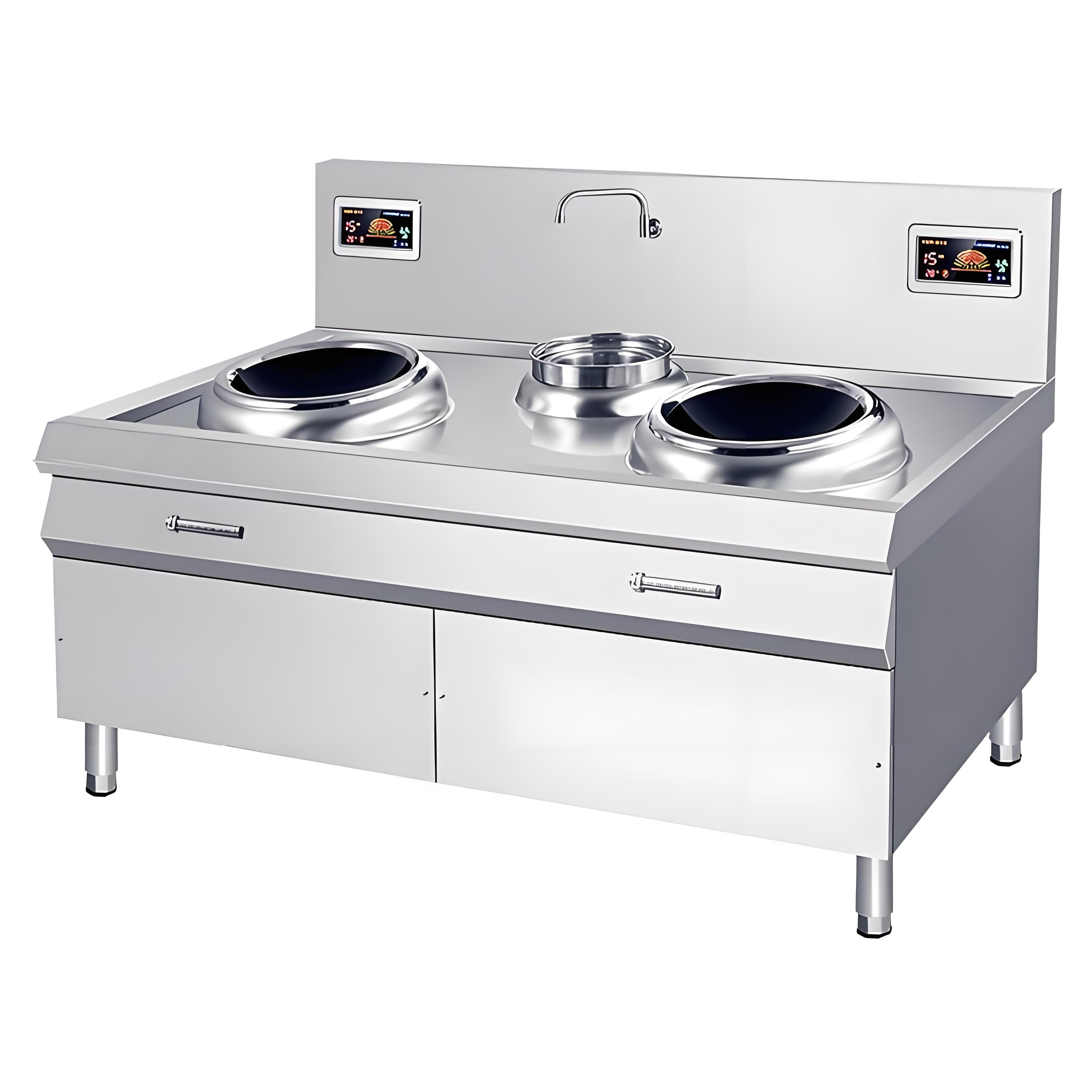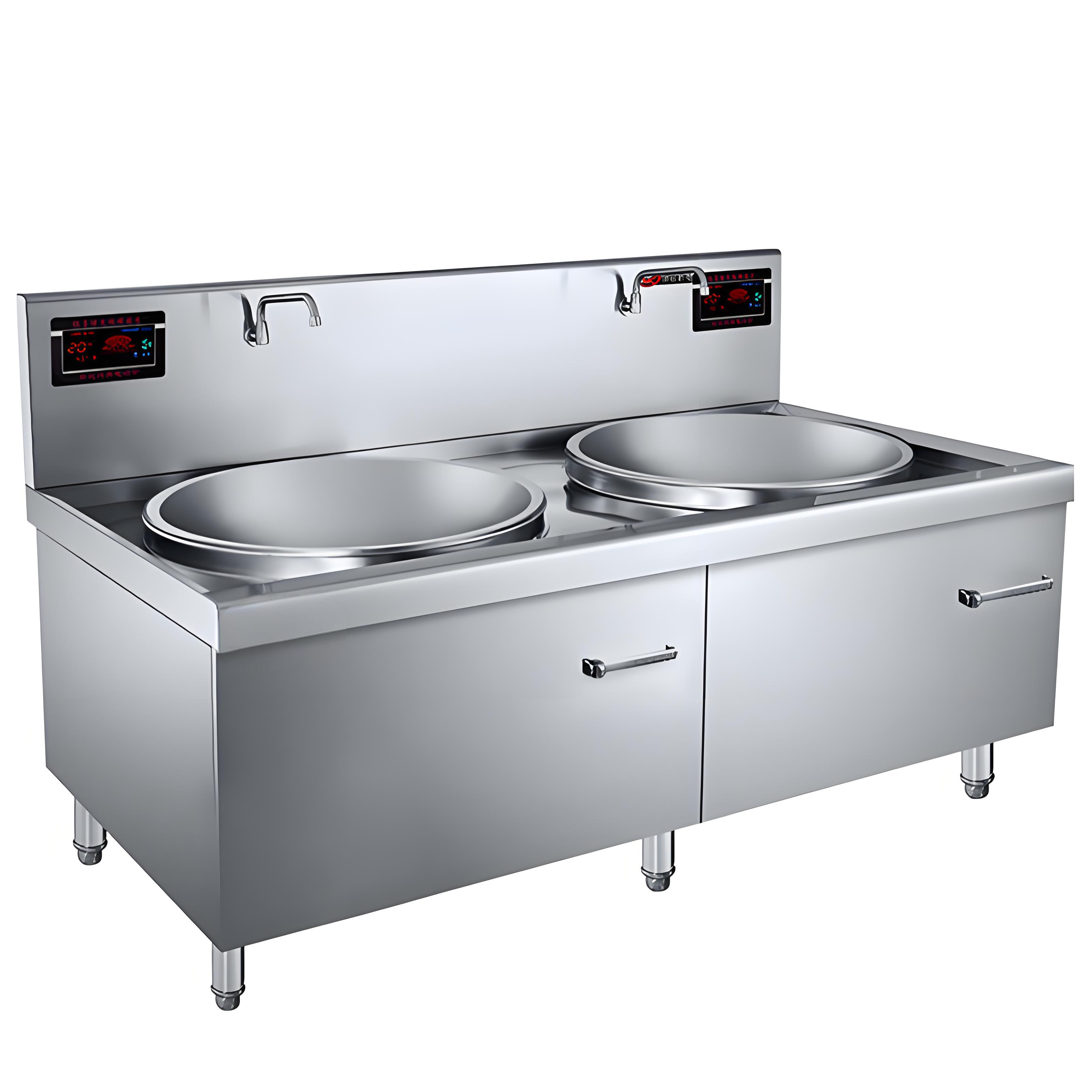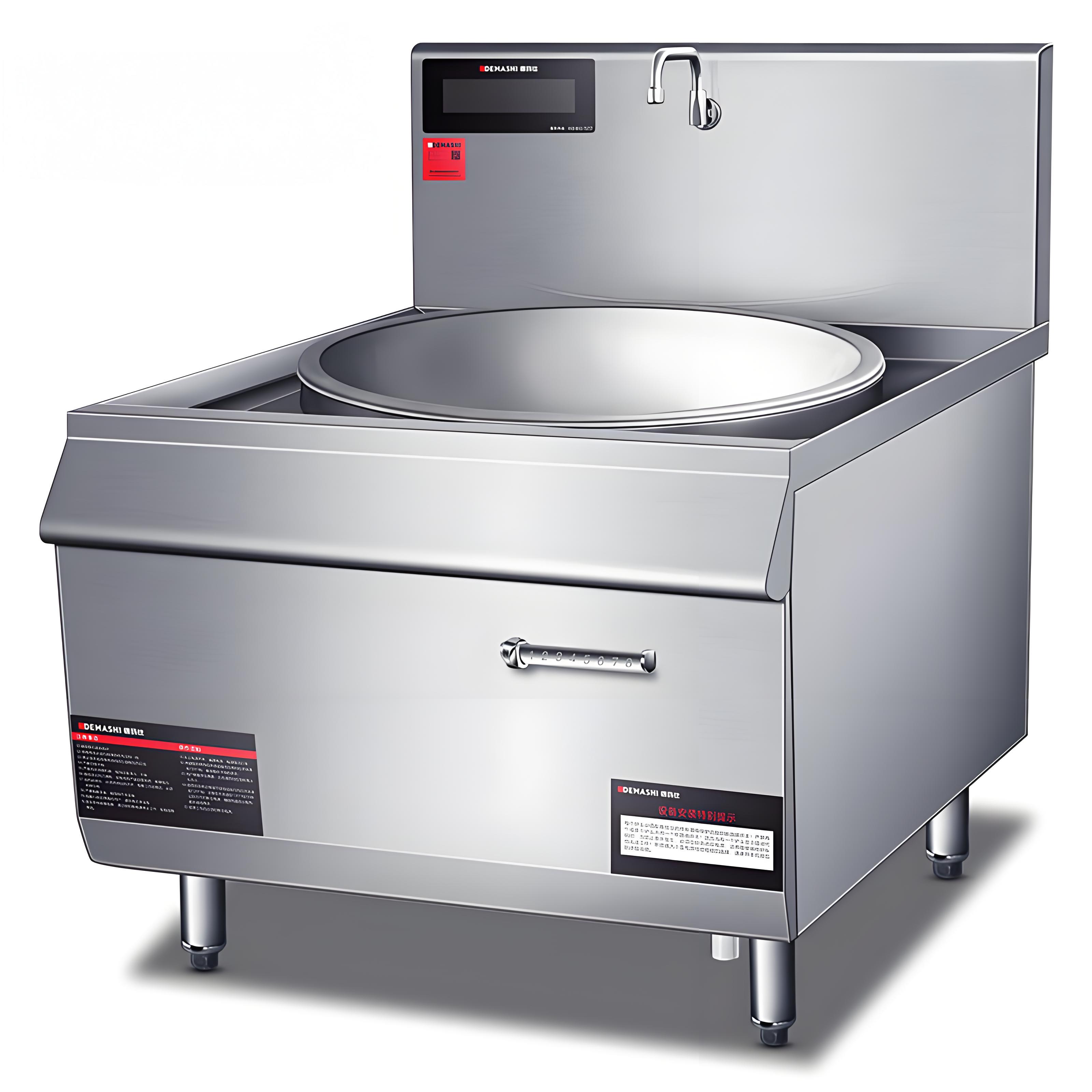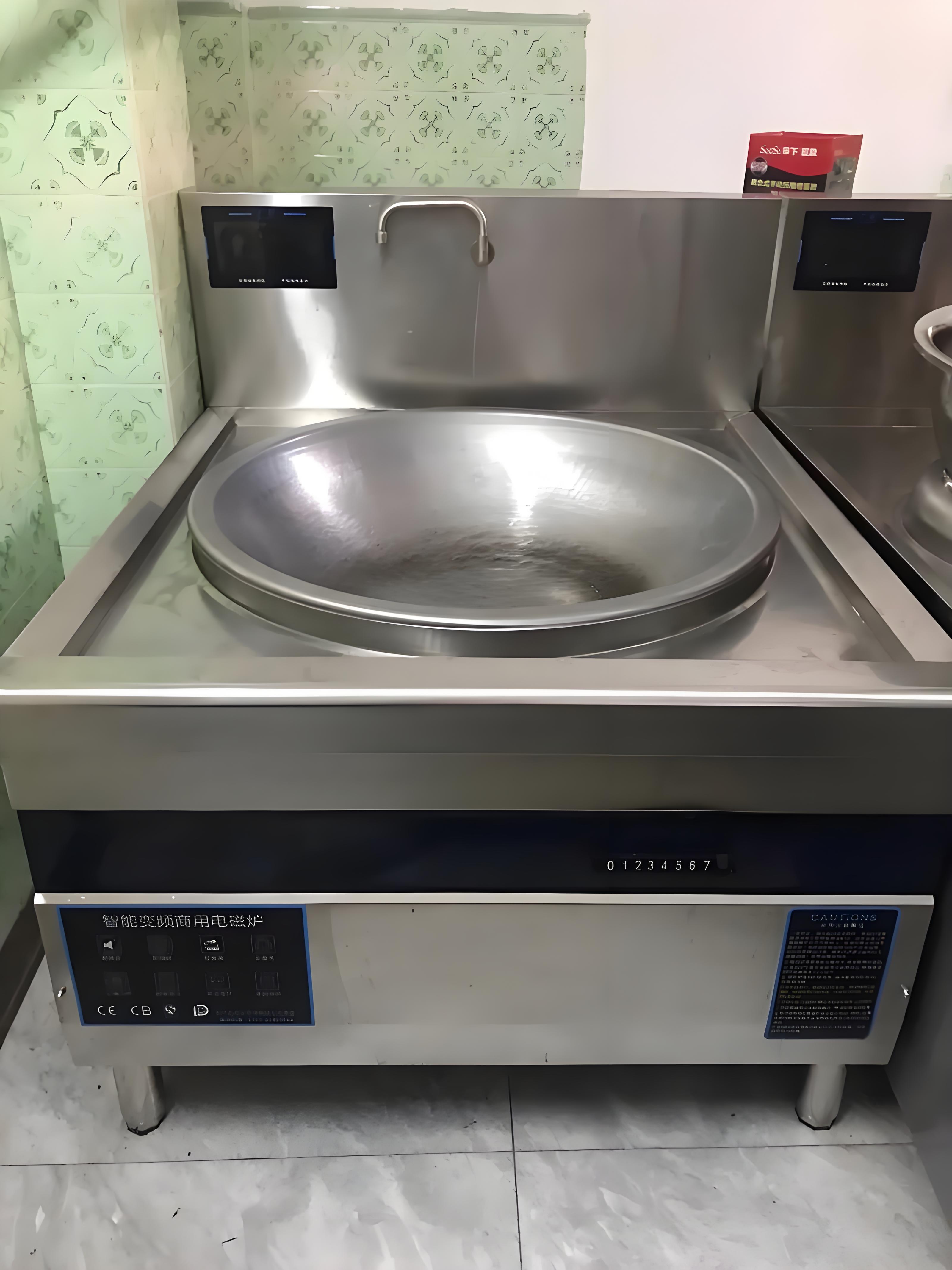As someone who’s been in the commercial kitchen equipment industry for over a decade, I’ve seen countless restaurant owners, chefs, and procurement managers wrestle with the technical specs of commercial induction cookers. These machines are game-changers for efficiency and precision, but their spec sheets can feel like a foreign language if you’re not familiar with the jargon. Let me share my experience and break it down for you in a way that’s practical, clear, and grounded in real-world use. My goal is to help you navigate those numbers and terms so you can choose the right induction cooker for your business with confidence.
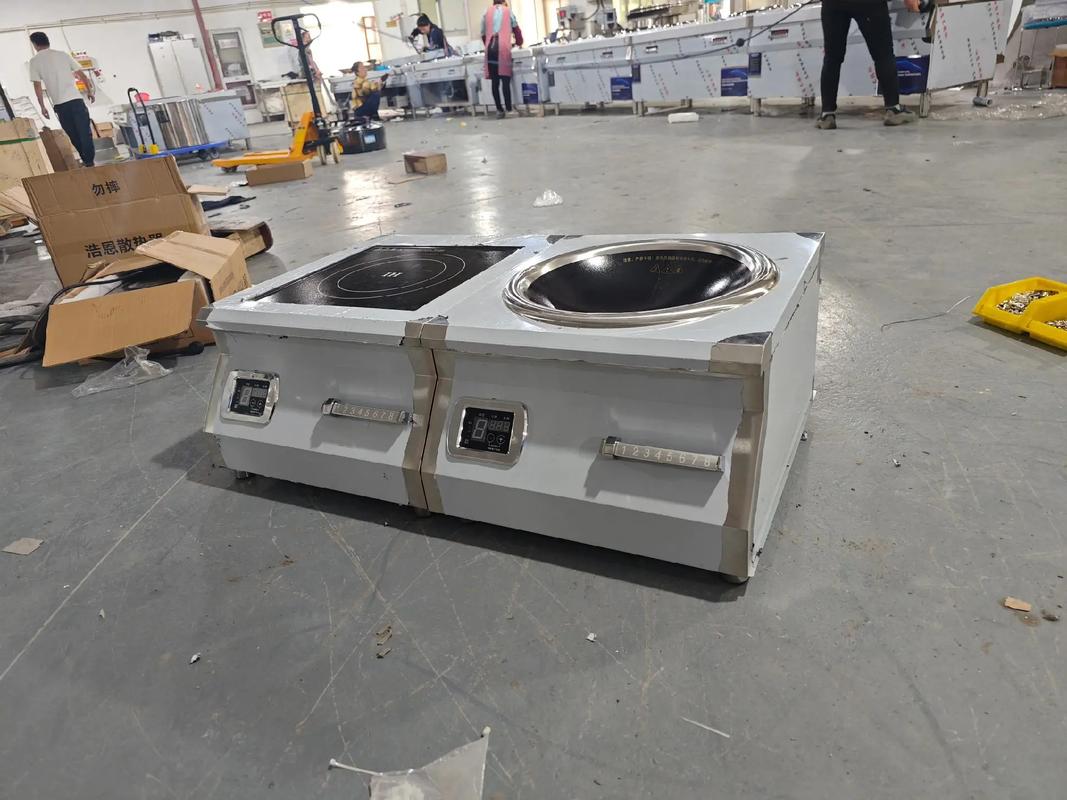
Why Technical Specs Matter
When I first started working with commercial kitchen equipment, I underestimated the importance of understanding technical specifications. I thought, “It’s just a cooker—how complicated can it be?” But after years of helping clients avoid costly mistakes—like underpowered units that couldn’t keep up with rush hour or oversized models that drained budgets—I’ve learned that specs are the roadmap to making informed decisions. They tell you how a cooker will perform, how much it’ll cost to run, and whether it fits your kitchen’s workflow.
Let’s dive into the key parameters you’ll encounter on a spec sheet and what they mean for your kitchen. I’ll explain each one, share practical insights from my experience, and include a handy table to summarize the essentials.
Key Technical Parameters Explained
1. Power Rating (Wattage)
The power rating, measured in watts (W) or kilowatts (kW), is the first thing I look at when evaluating an induction cooker. It tells you how much electrical power the unit consumes and, indirectly, how fast it can heat. Commercial induction cookers typically range from 3 kW to 20 kW per burner, depending on whether it’s a single-burner countertop model or a multi-burner range.
What it means for you: Higher wattage means faster heating and better performance for high-volume cooking, like boiling large pots of stock or searing multiple steaks during a dinner rush. But it also means higher energy consumption and potentially higher installation costs, as you may need a more robust electrical circuit (e.g., 3-phase power for units above 5 kW).
My tip: Match the wattage to your menu. For example, if you’re running a small café with light cooking needs, a 3.5 kW single-burner unit might suffice. For a busy restaurant with heavy wok cooking, aim for at least 5 kW per burner.
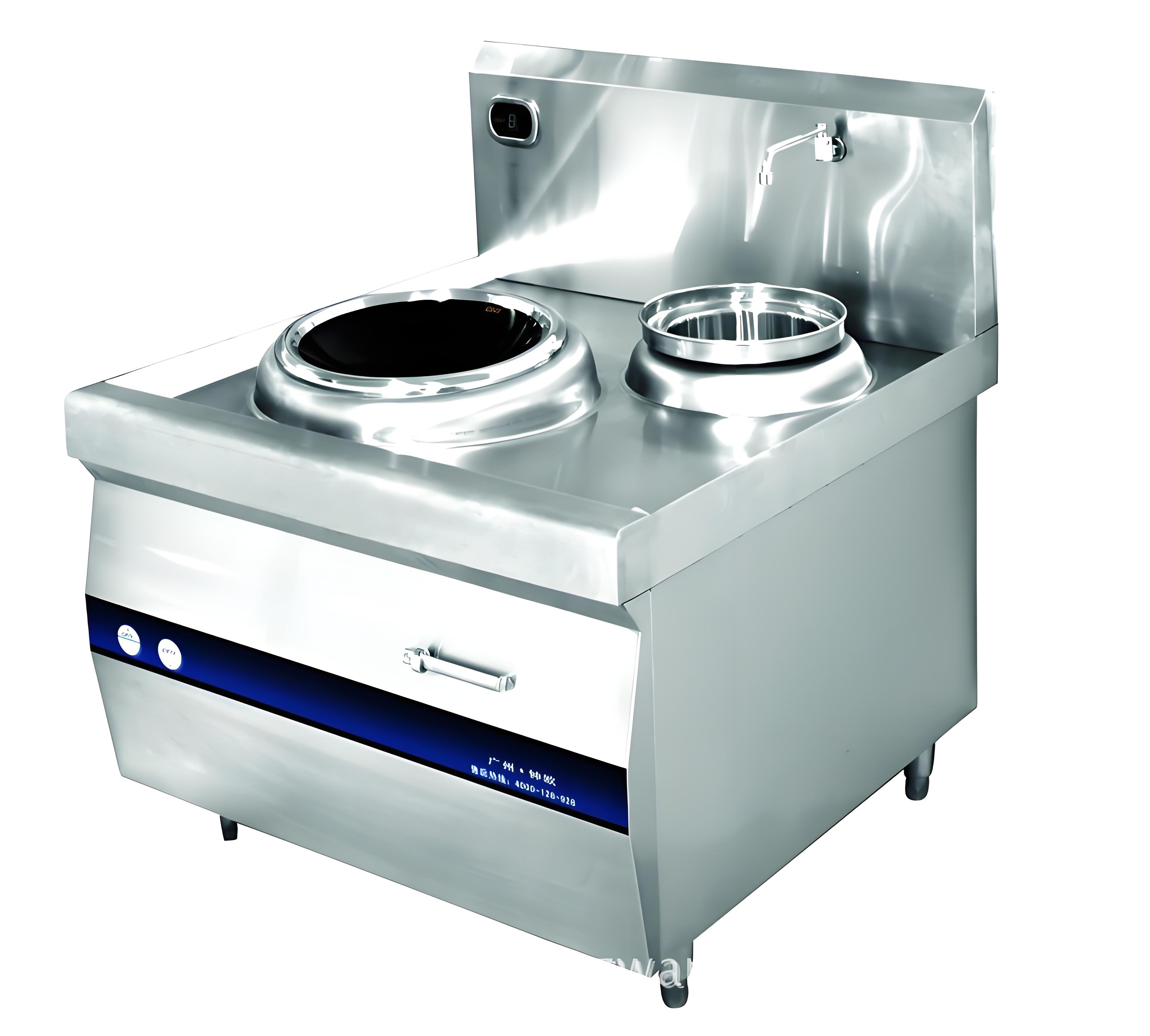
2. Voltage and Phase
Voltage and phase requirements are critical but often overlooked. In the U.S., commercial induction cookers typically operate on 208V or 240V single-phase for smaller units or 3-phase 208V/240V/480V for larger, high-powered models. In Europe or Asia, you’ll often see 230V single-phase or 400V 3-phase.
What it means for you: Your kitchen’s electrical setup must match the cooker’s requirements. I once worked with a client who bought a high-end 15 kW induction range, only to discover their kitchen was wired for single-phase 240V. The result? A costly electrical upgrade. Check your breaker panel and consult an electrician before purchasing.
My tip: If you’re unsure about your electrical setup, start with a lower-voltage countertop model (e.g., 208V single-phase) to avoid infrastructure headaches.
3. Cooking Zones and Burner Configuration
Commercial induction cookers come in various configurations, from single-zone countertop units to multi-zone ranges with four or more burners. The spec sheet will specify the number of cooking zones and their layout (e.g., 2×2 grid or linear).
What it means for you: The number of zones affects your kitchen’s throughput. A single-zone unit is great for small-scale operations or food trucks, while a four-zone range suits high-volume kitchens. Also, check if the zones are independently controlled—some budget models share power across zones, reducing efficiency when multiple burners are in use.
My tip: For flexibility, choose models with independent zone controls. I’ve seen chefs in busy kitchens juggle multiple dishes seamlessly because each burner could be set to a different temperature.
4. Temperature Range and Control
Induction cookers offer precise temperature control, often ranging from 60°C to 240°C (140°F to 465°F). Some models provide power levels (e.g., 1 to 10) instead of exact temperatures, which can be less intuitive but still effective.
What it means for you: Precise control is a hallmark of induction cooking. If your menu involves delicate tasks like tempering chocolate or simmering sauces, look for models with fine-grained temperature settings (e.g., 5°C increments). For high-heat tasks like stir-frying, ensure the upper limit is at least 200°C.
My tip: Test the controls during a demo. I’ve seen some units with clunky interfaces that frustrated chefs under pressure. Look for intuitive knobs or touch panels with clear feedback.
5. Efficiency and Energy Consumption
Induction cookers are known for their energy efficiency, often converting 85-90% of energy into heat compared to gas cookers’ 40-50%. The spec sheet may include an energy efficiency rating or estimated kWh usage.
What it means for you: Higher efficiency reduces your utility bills and environmental footprint. For example, a 5 kW induction cooker running for 8 hours a day at 80% capacity might consume around 32 kWh daily. Compare this to gas alternatives to estimate long-term savings.
My tip: Ask the manufacturer for real-world energy consumption data. In my experience, lab-tested efficiency numbers can be optimistic compared to busy kitchen conditions.
6. Dimensions and Weight
The spec sheet will list the cooker’s dimensions (width, depth, height) and weight, which are crucial for fitting the unit into your kitchen layout.
What it means for you: Space is often at a premium in commercial kitchens. A countertop unit might be 18 inches wide, while a full-size range could be 36 inches or more. Weight matters for installation—some heavy-duty units exceed 200 lbs, requiring reinforced countertops or stands.
My tip: Measure your kitchen space twice. I’ve seen clients order units that seemed perfect on paper but wouldn’t fit through the door or crowded the workspace.

7. Material and Build Quality
Look for details about the cooking surface material (usually tempered glass or ceramic) and the body material (stainless steel is standard). Some spec sheets mention IP ratings for water and dust resistance.
What it means for you: A durable build is non-negotiable in a busy kitchen. Tempered glass surfaces are easy to clean but can scratch if mishandled. Stainless steel bodies resist corrosion but vary in thickness—thicker steel (e.g., 1.2 mm) lasts longer.
My tip: Check the warranty on the cooking surface. I’ve seen cheaper models crack under heavy use, costing more in repairs than a premium unit would have upfront.
8. Safety Features
Commercial induction cookers often include safety features like overheat protection, pan detection, and automatic shut-off. These are sometimes listed as “smart functions” on the spec sheet.
What it means for you: Safety features protect your staff and equipment. Pan detection, for instance, ensures the cooker only activates when a compatible pan is present, saving energy and reducing burn risks.
My tip: Prioritize models with clear safety indicators (e.g., lights or alarms). In a hectic kitchen, these small details can prevent accidents.
Summary Table of Key Specifications
Here’s a concise table summarizing the most critical specs to check, based on my experience helping clients choose the right induction cooker:
|
Specification |
What to Check |
Why It Matters |
Typical Range |
|---|---|---|---|
|
Power Rating |
Wattage per burner |
Affects heating speed and energy costs |
3 kW to 20 kW per burner |
|
Voltage/Phase |
Single-phase or 3-phase compatibility |
Must match your kitchen’s electrical setup |
208V/240V single-phase, 400V 3-phase |
|
Cooking Zones |
Number and independence of burners |
Impacts throughput and flexibility |
1 to 6 zones |
|
Temperature Range |
Min/max temperatures and control precision |
Crucial for diverse cooking techniques |
60°C to 240°C |
Practical Steps to Decode a Spec Sheet
Now that you know the key specs, here’s how I approach a spec sheet to make sense of it in a real-world context:
Start with your needs: Before diving into numbers, think about your kitchen’s demands. Are you cooking for 50 covers a day or 500? Do you need portability or a fixed range? This sets the baseline for what specs matter most.
Cross-check power and electrical setup: Always verify that the cooker’s voltage and phase match your kitchen’s infrastructure. If in doubt, consult an electrician early.
Focus on usability: Look for details about controls, safety features, and build quality. These affect day-to-day operations more than you might expect.
Compare energy efficiency: Calculate rough energy costs based on wattage and daily usage. This helps you weigh upfront costs against long-term savings.
Request a demo: Specs only tell part of the story. Whenever possible, test the unit in action to see if it feels intuitive and reliable.
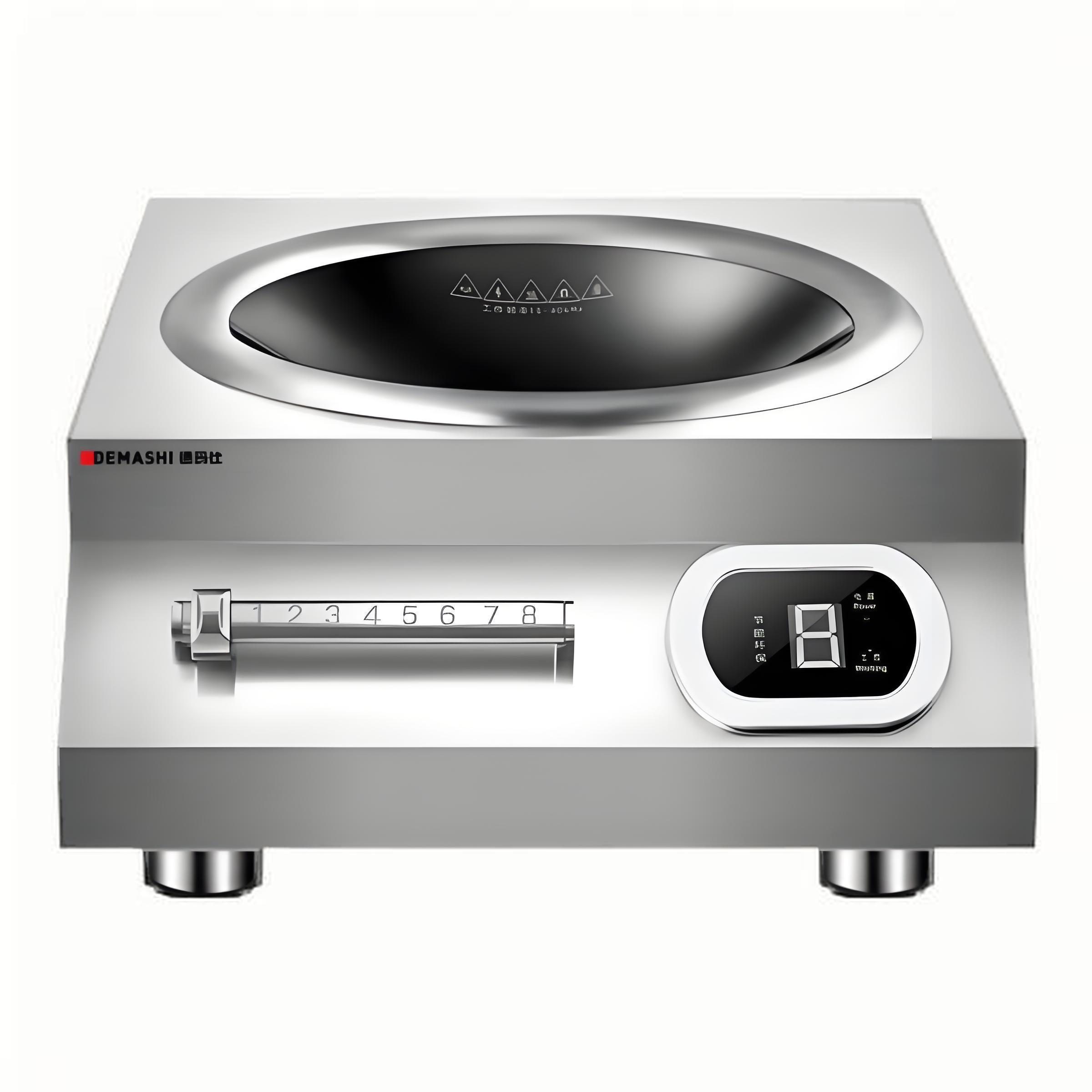
Common Pitfalls to Avoid
Over the years, I’ve seen a few recurring mistakes when people interpret spec sheets:
Ignoring electrical requirements: Buying a high-powered unit without checking your kitchen’s wiring is a recipe for delays and extra costs.
Overbuying power: A 20 kW cooker sounds impressive, but if you’re not running a high-volume kitchen, you’re wasting money on energy and infrastructure.
Skimping on build quality: Cheaper models often cut corners on materials, leading to frequent repairs. I’ve seen restaurants save $500 upfront only to spend $2,000 on maintenance within a year.
Overlooking safety features: In a fast-paced kitchen, features like pan detection and auto shut-off aren’t luxuries—they’re necessities.
My Personal Experience: A Lesson Learned
Early in my career, I helped a small bistro select a commercial induction cooker. The owner was drawn to a budget-friendly model with a flashy spec sheet boasting “10 kW power.” It seemed like a steal, but we didn’t dig into the fine print. The unit required a 3-phase 400V setup, which the bistro’s outdated wiring couldn’t support. Installation costs ballooned, and the owner ended up returning the unit. That experience taught me to always cross-reference specs with real-world constraints. Since then, I’ve guided dozens of clients to avoid similar headaches by focusing on practical compatibility over flashy numbers.
Making the Final Decision
Choosing a commercial induction cooker isn’t just about picking the model with the highest wattage or the most burners. It’s about finding a balance between performance, cost, and compatibility with your kitchen’s setup and workflow. Take your time to compare spec sheets, ask manufacturers for clarification, and, if possible, visit a showroom to see the unit in action. I’ve found that hands-on testing often reveals nuances—like control responsiveness or build sturdiness—that specs alone can’t convey.
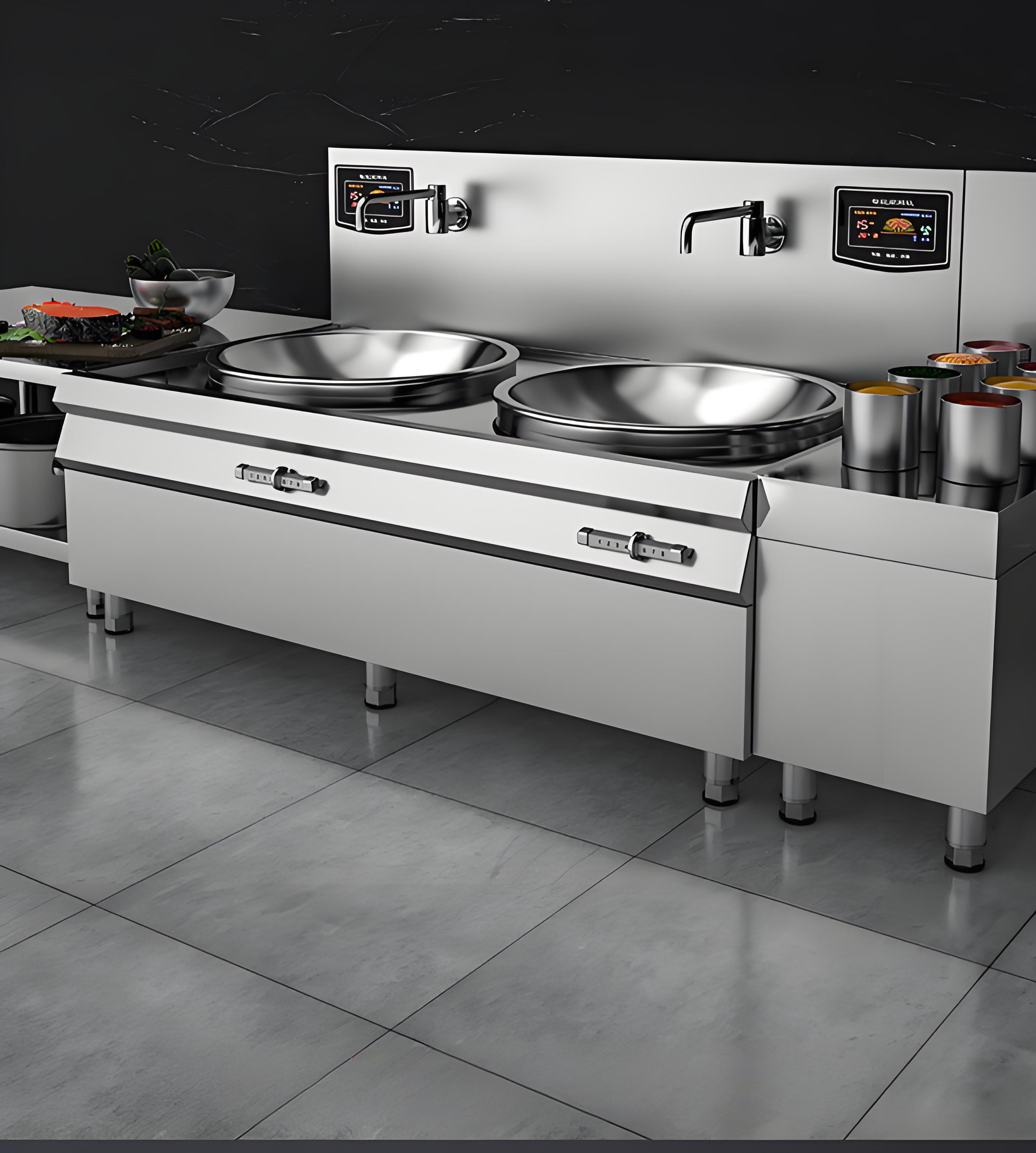
Wrapping Up
Understanding the technical specifications of a commercial induction cooker doesn’t have to be daunting. By focusing on key parameters like power, voltage, cooking zones, and safety features, you can make a choice that boosts your kitchen’s efficiency and keeps your team safe. My years in the industry have shown me that a little upfront effort in decoding specs can save you thousands in costs and countless headaches down the line. So, grab that spec sheet, use the table above as a guide, and feel confident in picking a cooker that’s just right for your business.
Related Questions and Answers
Q: How do I know if my kitchen’s electrical system can handle an induction cooker?
A: Check your breaker panel’s voltage and phase capacity (e.g., 208V single-phase or 400V 3-phase). Compare this to the cooker’s requirements on the spec sheet. If they don’t match, consult a licensed electrician to assess upgrade costs.
Q: Are higher-wattage induction cookers always better?
A: Not necessarily. Higher wattage means faster heating but also higher energy costs and stricter electrical requirements. Choose based on your cooking volume and menu needs—3.5 kW is often enough for small kitchens, while 10 kW suits high-volume setups.
Q: Can I use any cookware with an induction cooker?
A: No, you need ferromagnetic cookware (e.g., cast iron or certain stainless steels). Test with a magnet: if it sticks to the pan’s base, it’s compatible. Check the spec sheet for pan size compatibility, as some units have minimum or maximum diameter requirements.
Q: How do I maintain an induction cooker to ensure longevity?
A: Clean the glass surface daily with a non-abrasive cleaner to prevent scratches. Avoid dropping heavy pots, as this can crack the surface. Regularly check for loose connections or wear, especially in high-use environments.
Q: Are commercial induction cookers worth the investment compared to gas?
A: In my experience, yes, for most modern kitchens. They’re more energy-efficient, safer, and offer precise control. However, the upfront cost and electrical setup can be higher, so calculate long-term savings based on your usage.
